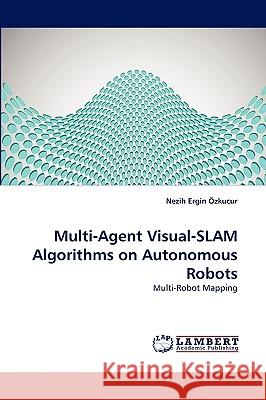Multi-Agent Visual-SLAM Algorithms on Autonomous Robots » książka
Multi-Agent Visual-SLAM Algorithms on Autonomous Robots
ISBN-13: 9783838382265 / Angielski / Miękka / 2010 / 120 str.
The Simultaneous Localization and Mapping (SLAM) problem is one of the most challenging problems in robot navigation. The problem addresses autonomously exploring and mapping an unknown environment without prior knowledge (of features). The robot should generate the map of the environment and estimate its pose with respect to the map. An extension of this problem to the distributed multi-robot platform is a popular research topic for its challenges and commitments. Multiple cooperative robots exploring an area would decrease exploration time and increase the accuracy. This work introduces the application of two successful SLAM solution techniques to the multi-robot domain using visual sensors and non-unique landmarks. There are two contributions to the literature: Evolutionary Strategies (ES) is used to calibrate the parameters of the Extended Kalman Filter-SLAM (EKF-SLAM) method with supervised data, and a novel map merging method with uncertainty propagation is introduced for the Fast-SLAM algorithm. The developed algorithms are tested in both simulated and real robot experiments and the improvements and applicability of the developed methods are shown with the results.











